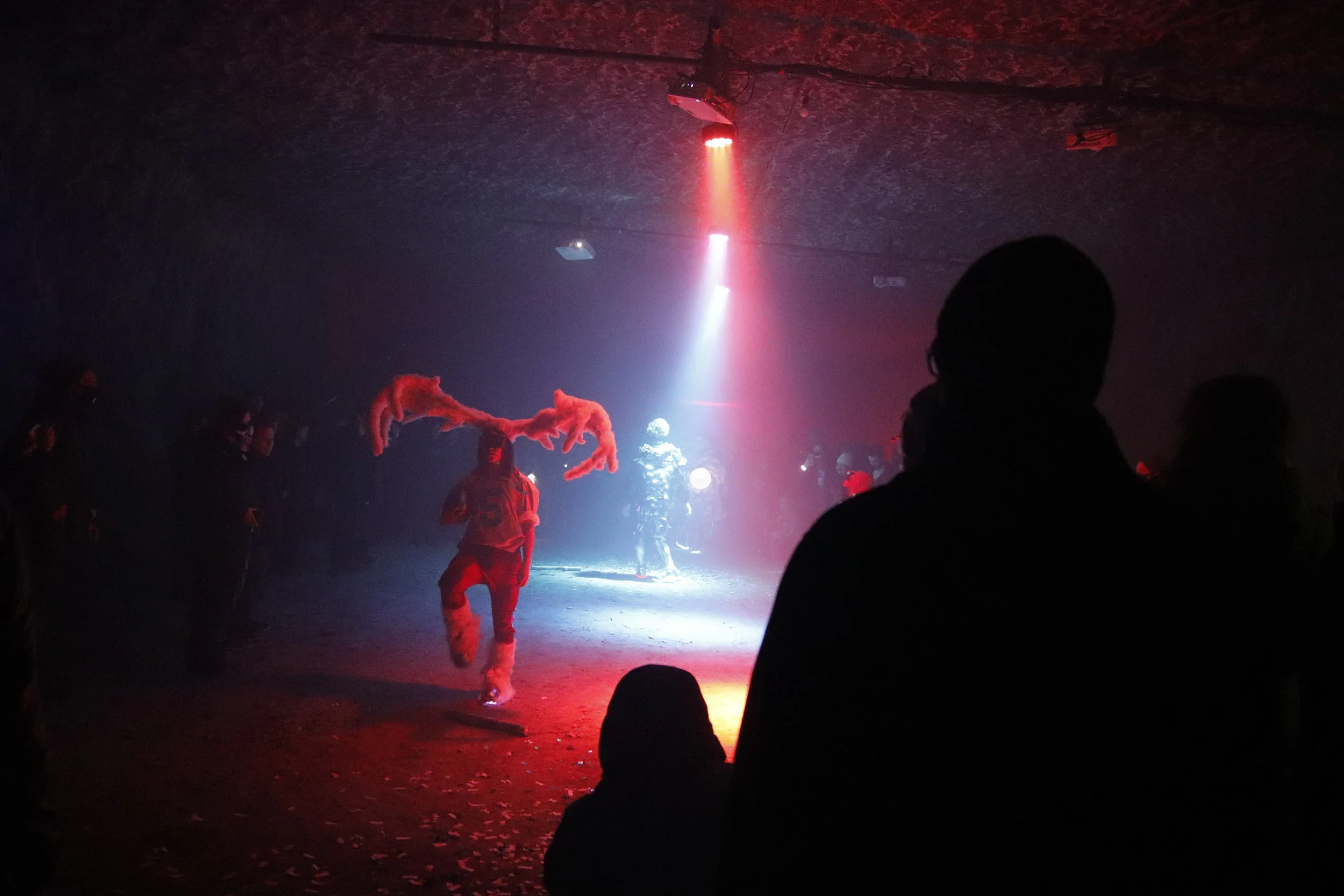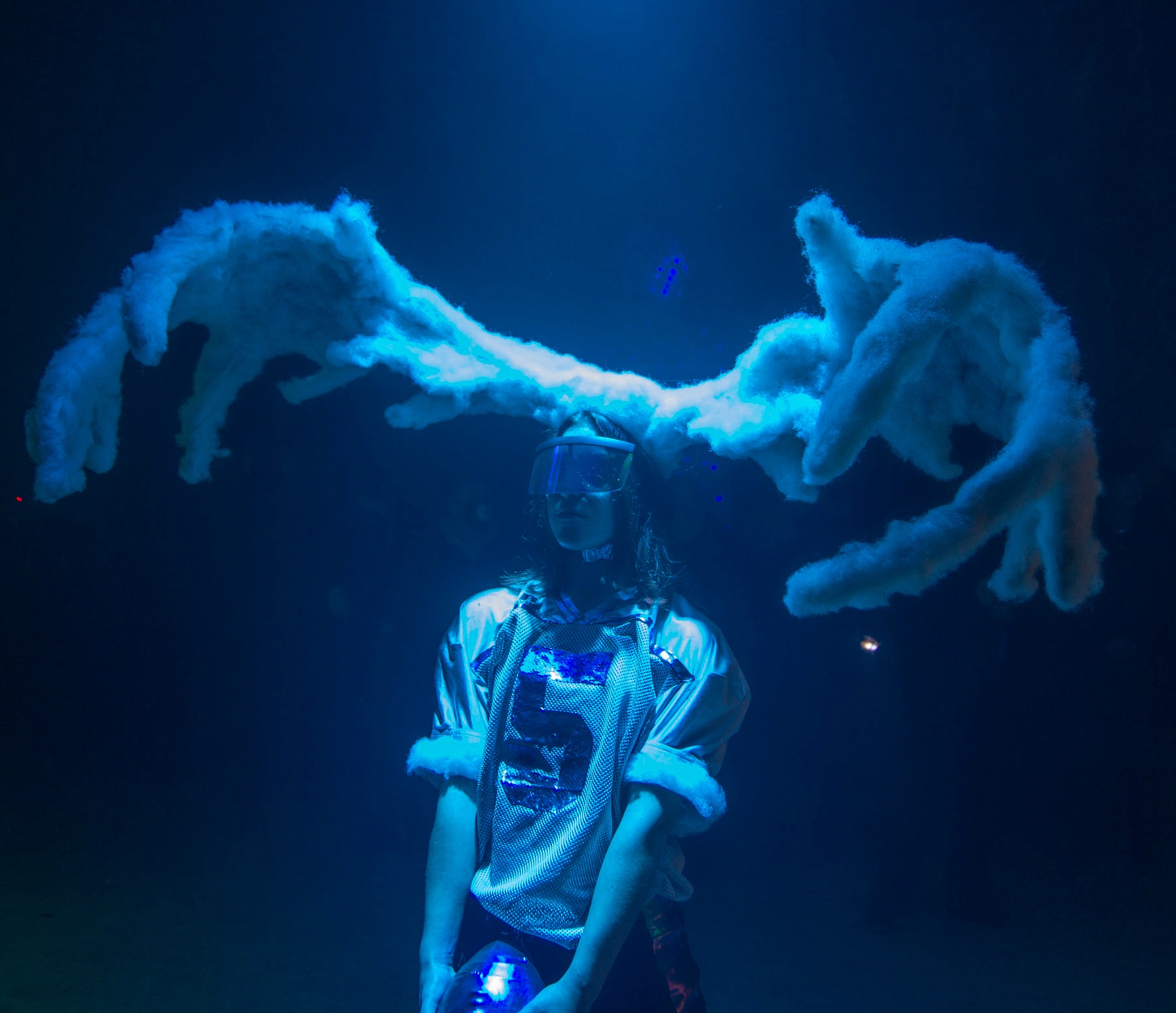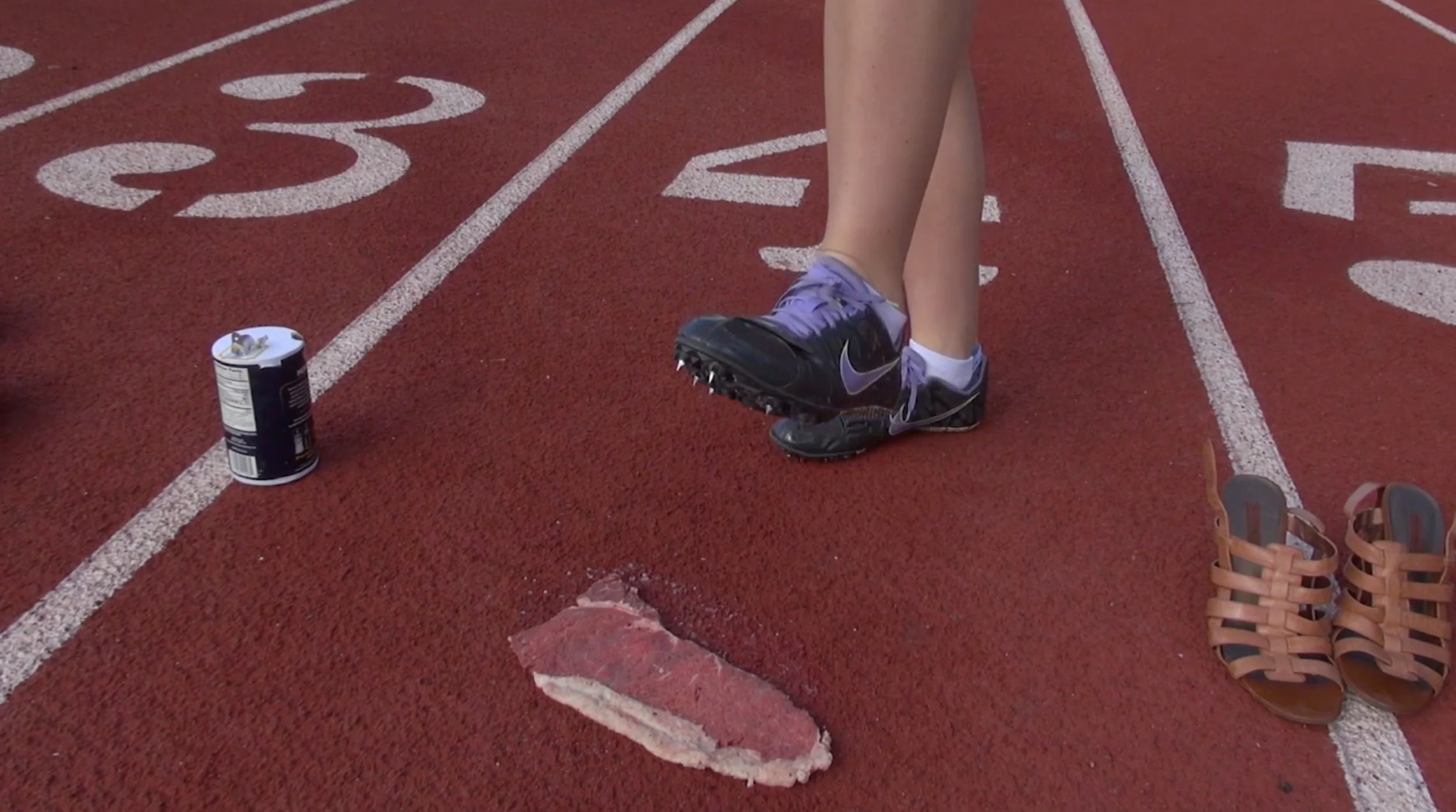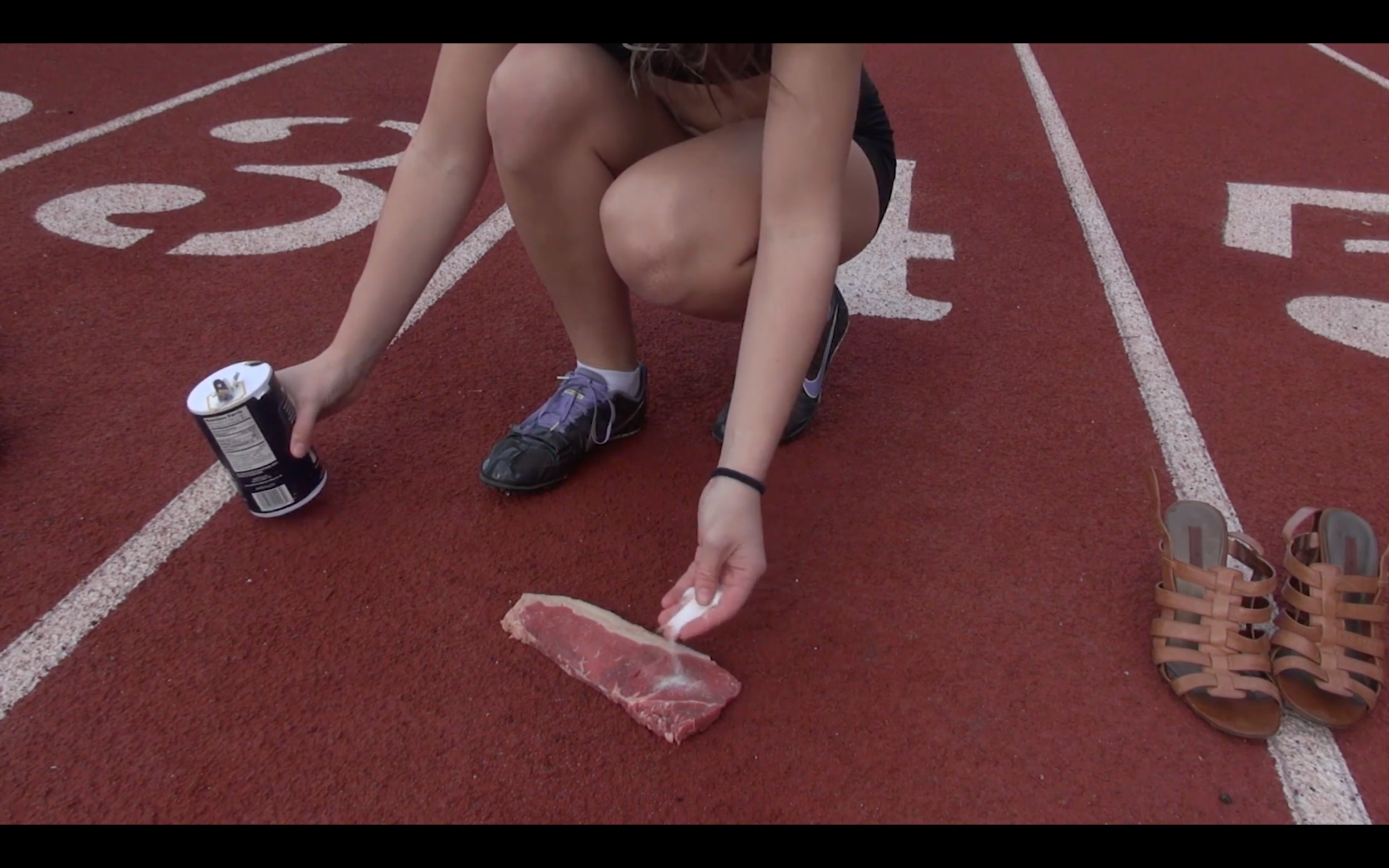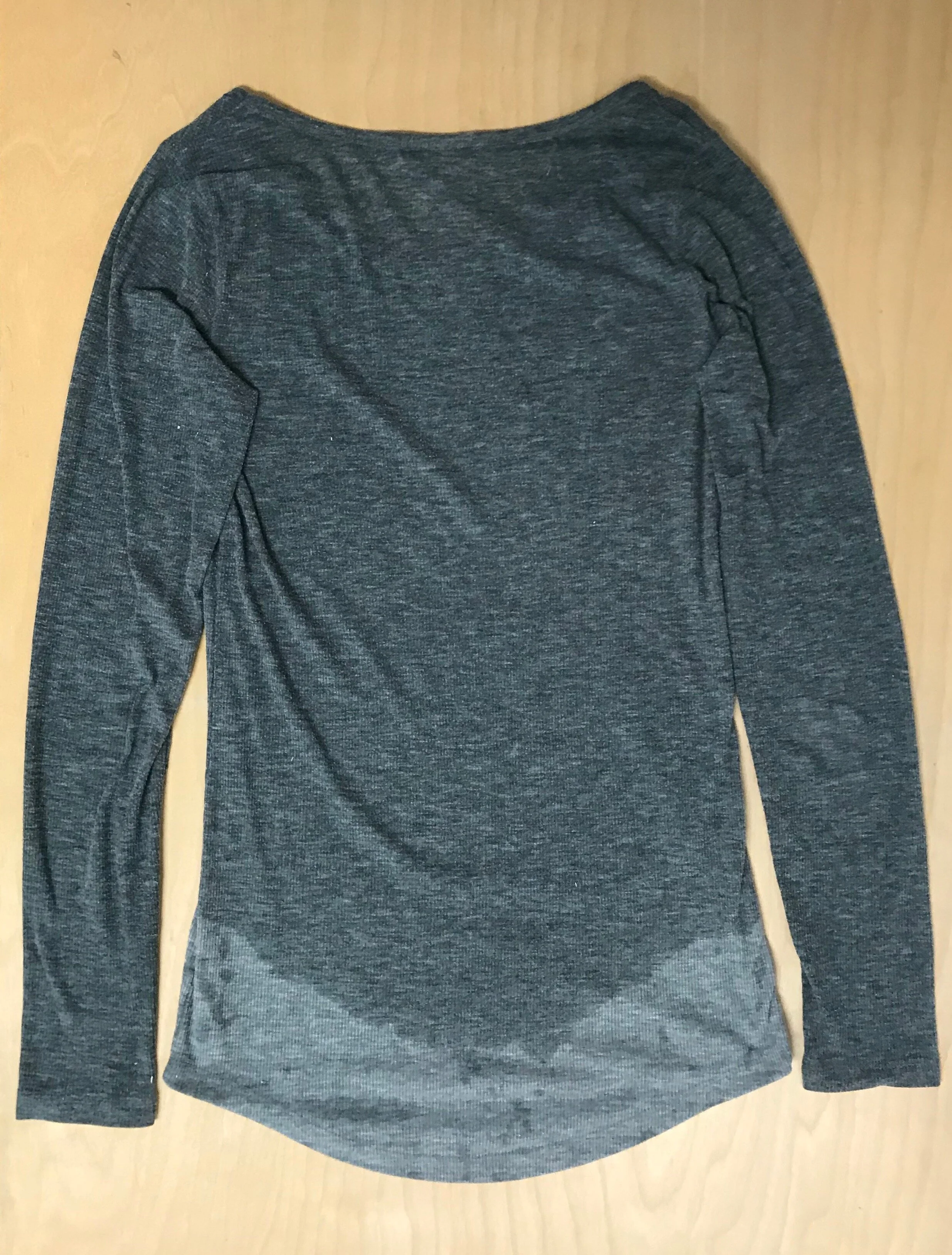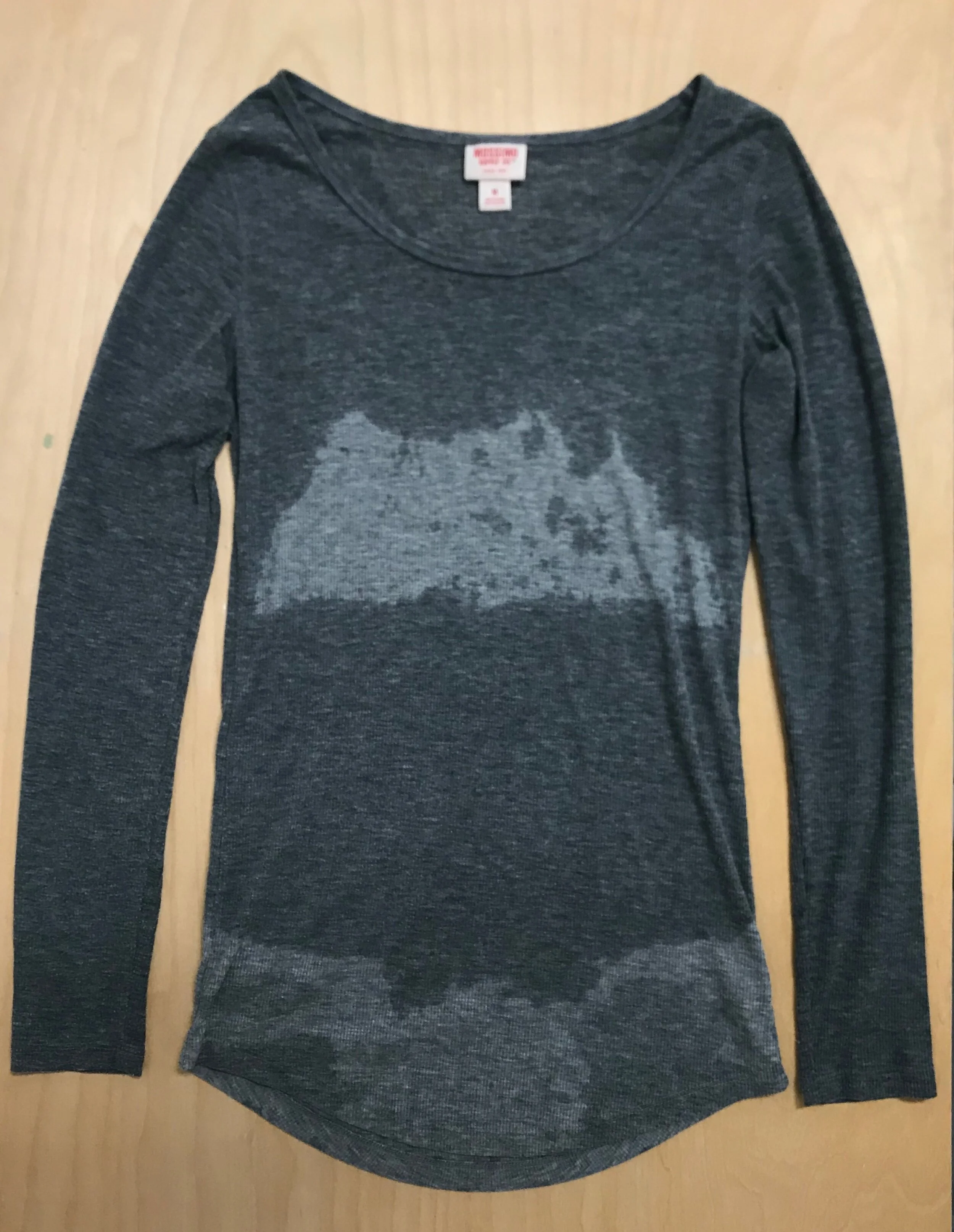
Adorned Player
December 2018, Brady's Bend Underground Storage
The future of football is here! With advanced technology we have been able to genetically modify the human skull to hold traits of those animals who can withstand heavy blows to the head and not withstand a brain injury. (Side effects of the process may include alteration of the feet, excessive body hair and growths on the cranium.)

Headball
November 2018, Brew House Association
This piece responds to the concussion crisis and toxic masculinity in American Football. The front of the headpiece is a representation of a swollen brain and tissues, where the back of the headpiece is representative of the sharp pains attributed to this injury.
Draped down the back there are pantyhose that represent testicles. The shoes are old football cleats transformed into 5” heels. These two aspects of the costume, along with the fact this piece is to be worn by a woman speaks to the toxic masculinity that is perpetuated by American Football.

Spikes
March 2017, Gesling Stadium
This piece is a commentary on women in sports and the different difficulties, and stereotypes that women go through as athletes.
The framing of the film itself is shot at the ground, at the meat, only including my legs, feet, torso, and most importantly, not my face. Doing this I was able to sexualize my own body as a representation of the sexualization of women in our society. More specifically this points to the sexualization of women in sports: how the way women athletes look is discussed much more than men, how what women athletes are wearing is more important than how they performed etc, etc.
The raw steak, a symbol of the masculinity surrounding sports. By “tenderizing” this meat, the woman is breaking through these masculine expectations. By stroking the meat, the woman is complying to this male-dominated industry, creating a push and pull effect, speaking to the constant back and forth struggle of the woman athlete.
The awareness of the camera by the performer is to create a 'cooking channel' feel, where I was demonstrating to an audience how to tenderize meat. This speaks to expected roles of women in society.
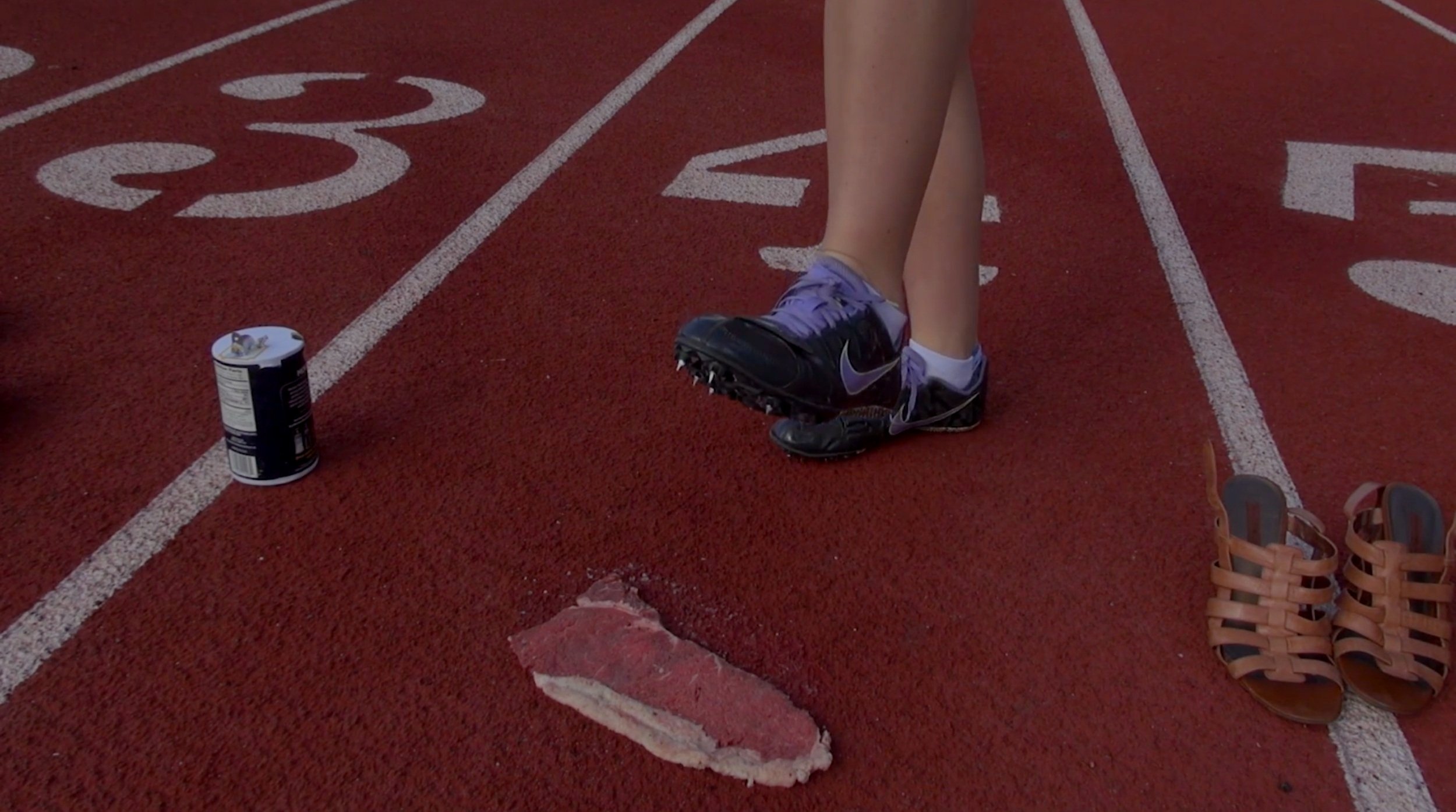
Track Tricycle
October 2019, Gesling Stadium
Track Tricycle is a durational endurance performance done by the artist. This project stems from the artists internal feeling and insecurities and is a projection outwards to her friends, peers and coaches. In this performance, the box represents the confinement and isolation felt by the artist on her cross country team and in her day to day life. The reflective surface is about how those around her project themselves onto her which makes her feel like less of an individual. The childhood trope of the tricycle is speaking to the way she feels she is treated as a woman, an artist and as a non- top performing athlete. The act of circling around and around the track she has trained on for three years is something she has done before, however this act was more strenuous than any running workout that she has done before. This was another important aspect to the work in how the artist herself though she is confronting these feelings, may feel that she deserves the hard work and deserves to be physically punished. In the end of the performance, the artist was asked to leave the track, as she was violating one of the policies set by the stadium management.
The direct audience for this performance was the Carnegie Mellon Football team, and coaches, the CMU Track and Field team and coaches, a few members of the Cross Country team and coaches, passerby’s. This audience was angry, amused, but mostly confused by the act. This audience also had the opportunity to figure out who the artist was, and asking her about it after the performance. A secondary audience are people on social media after people posted photos and videos of the event, those who hear about the project from their friends, and lastly are those who read about the project on a blog or website. The audience on social media is the least likely to figure out who I am, as they are strangers and do not have the same context as my teammates to figure out who is the boxed figure. What the audience members will ultimately get from this performance is a feeling, and whichever feeling that might be, then this has been a successful performance.
Duration: 45 minutes
Distance: 1.24 miles
Temperature: 83°F
Policies Violated: “No Rollerblades or Bicycles”

Artificial Athlete
October 2016, Gesling Stadium
When deciding how to alter my body, I reflected on my recent struggles that I had been experiencing on the varsity track team at Carnegie Mellon my Freshman year. After being one of the top runners in my high school and coming to run in college I anticipated going back to the bottom but I did not think that I would be utterly embarrassed with my performance. Every day I kept finding myself commenting on how I wished I was just a little taller, or a little stronger and a lot faster. I thought about what it would be like to only be wishing but not actively doing anything to change your situation. It can be argued that great athletes can be born, but it's also known that great athletes can be built through hard work and dedication. Simply hoping that you’d get better will not last.
These artificial enhancements I have created, fall apart, some almost immediately, deeming them useless. The “abs of steel” were in reality copper squares (one of the weakest metals) sewed onto the fabric with a very thin string. The arm bands, not falling apart were also useless as they were filled with plush material that is found in stuffed animals. Two blocks of wood and duct taped to my feet, temporarily increased my height.

Here’s Some Advil
November 2016, Gesling Stadium
A dual screen projection on the building across from the football field.
This is a commentary on concussions within the context of football. Motivated by my own experience with concussions, I included myself in this piece. This piece is narrated by retired NFL player Thomas Jones about what it really feels like to have a concussion.
In cartoons, the characters can have an anvil fall on their head, but moments later, they are back to normal. I decided to put clips of cartoon characters after getting hit in the head along side found footage of some of “the biggest hits” in football. This comparison is a critique of how concussions are not taken as seriously as they should be. On the right side of the screen, I am throwing a bottle of Advil to the players on the left screen. This is to say that concussions are treated like a pain that can be treated with Advil.
“Here's some Advil”
“Shake it off”
“Get back in the game”
“Concussions are no big deal”
“Stop being a sissy”

High Striker
March 2019 [Performance Schematic]
Balls
July 2015, School Art Institute Chicago






